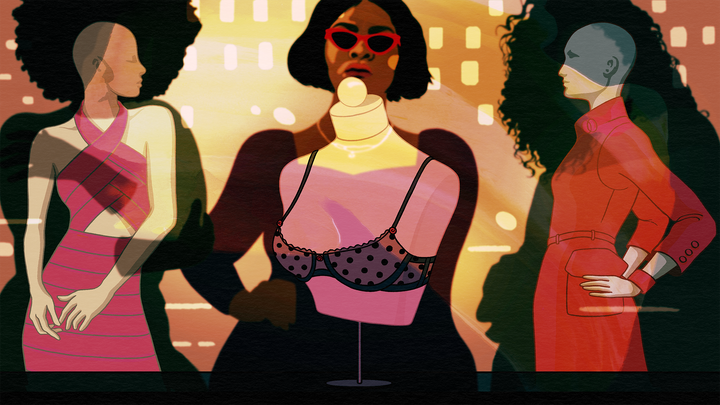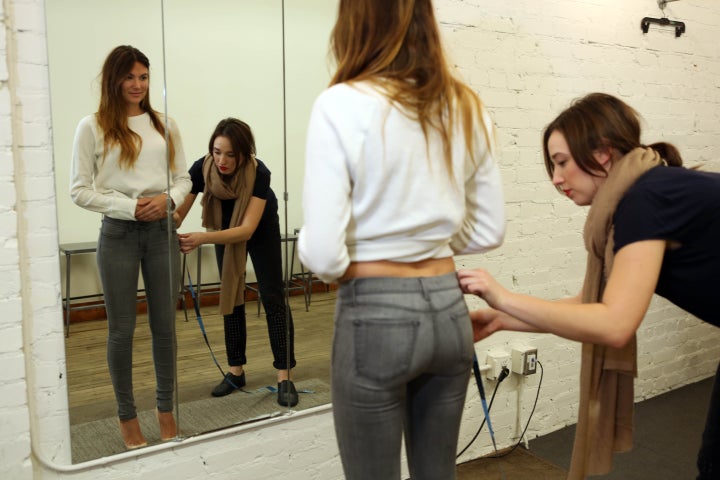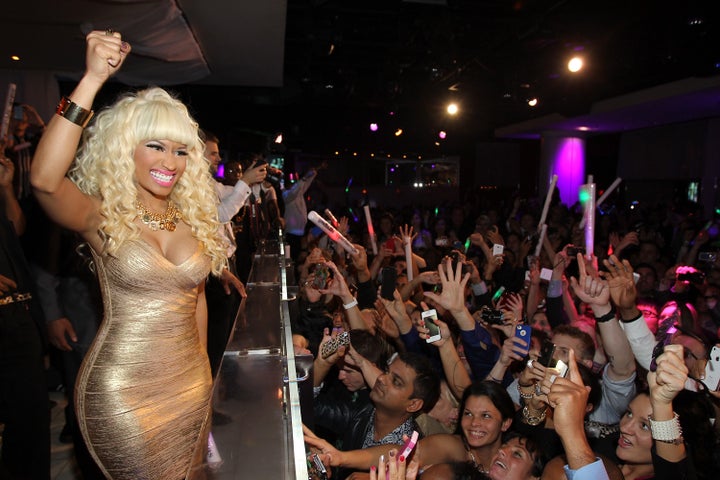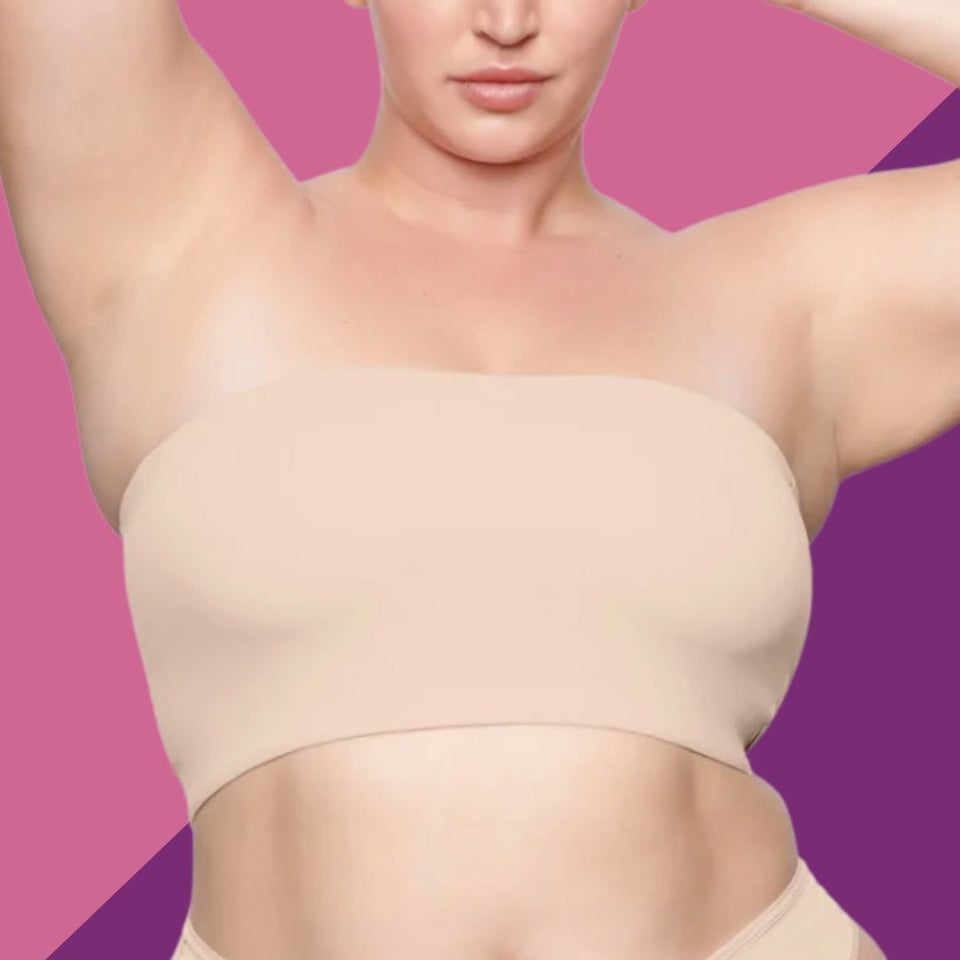
Check out more stories from Busted, our series that offers an unfiltered exploration and celebration of our boobs and ourselves during breast cancer awareness month.
Dynamically connected to the zeitgeist, fashion is often at the forefront of innovation. With the popularity of body positivity in mainstream culture and wider representation of all sizes on the runway, it’s somewhat surprising that people with large breasts often struggle to find stylish clothes in 2022.
“I wear a size 42F, which isn’t really that big, considering,” said Erica, a 34-year-old editor in New York whose name has been changed for her privacy. “It’s nearly impossible to find stylish, fitted clothing without making alterations. I used to think having big breasts was desirable; it’s a nuisance. People tell me to consider breast reduction surgery. Do you understand how sick that is? Why should I have to go under the knife to conform to a body type that’s more acceptable?”
Shoppers with a large bosom — anything over a D cup — are frustrated at the lack of options, in particular in clothing that’s fitted. “Big boobs suck! It’s so hard to find clothes that work for the top and bottom halves of my body,” noted Kim, a 22-year-old grad student living in Brooklyn who also requested to remain anonymous. “The lack of options can take a toll on your self-esteem. I wouldn’t consider myself plus-size but when you’re in a G cup, good luck escaping that label.” More than frustration, the dearth of stylish clothing options for people with large breasts can be stigmatizing and leave them feeling underrepresented — and thus, invisible.
The fit model determines sizing for shoppers.
Inclusive sizing is still a major issue for the fashion industry — and it’s complicated by broader cultural notions of patriarchy and capitalism. Standard sizing assumes all women of one size have the same size breasts all around, which is simply not true. “The assumption really falls upon the fashion industry and the representation of what they call ‘fit model,’ which is usually a size 4 with a 34B cup size when the average woman is [much larger],” said Beverly Osemwenkhae, a former model who’s a wardrobe stylist and CEO of Project Bee Wardrobe Consulting.
“More curves is more work, [it’s] more complicated,” Clémentine Desseaux, a French-born model who’s been named a “top ten plus size model” by Vogue. Desseaux is also the founder of The Womxn Project, a platform that supports body positivity, self-acceptance and empowerment. “It’s also a big reason why most designers only design for small sizes and one of the reasons why sample size is a 00. It’s much easier.”
Lindsay Jones, a designer and creative assistant to Zac Posen who sits on the board of directors on Equality New York, told HuffPost that the issue is more complicated. “There’s just not enough money to create fit models for every size — having a fit model is expensive. You have to pay the model, the tailor, everyone involved. To do this for each size and body type is way too costly. What we end up doing is grading up on a pattern mathematically and making sizes by increasing the measurements on the fit model using percentages.”

She explained that 00 is not a common size, and not really helpful for most people’s fit. “The more companies focus on a variety of body types, the more successful they will be [with that body type].” She noted that there are “so many body type variations, from short and curvy to petite and large busted. If the brand wants to focus on a body type, they will succeed if they get that body type fit model.”
Do designers prefer flatter chests?
“High-end designers usually make clothing that goes from size 0 to 8 or at times maybe a 10,” said Osemwenkhae, who splits her time between New York and London. “These styles are usually designed in a way that you can’t always wear a bra or works best for someone with a petite frame.” She went on to say of her former modeling days, “Having a smaller frame overall was always a preference in the industry. Having small, perky breasts was a plus.” She also noted that designers see small breasts as more youthful than larger breasts.
On the other hand, plus-size clothing tends to fall into one of two camps: tent-like and boxy or hyper-sexualized to fit the outdated “pin-up” stereotype. “As a plus-size model, we are required to have some breast,” Desseaux explained. “Those who have a flatter chest have to use ‘add-ons’ to seem like they have more. Those who have too much might not work because the clothes simply aren’t made for them. As plus-size women, we are expected to be hourglass shape. That’s what designers design for.”
There’s a notion, especially among high-end designers, that buxom breasts denote a more “vulgar, sexualized” aesthetic. “There is traditionally one of two directions high-end fashion designers approach cleavage,” Jones said. “There’s the Hervé Léger bandage dress meant to look like a corset that pushes up the breasts, and turns [the wearer] into a sexualized object.” She noted this was especially en vogue in the 1980s when “big breasts were a status symbol,” (though Vogue published a 2022 story noting the look is having a resurgence). The other direction designers take when designing around breasts, explained Jones, is to obscure cleavage. “Think the oversized Balenciaga shirt that isn’t meant to fit on the shoulder.” This look, she said, is designed to hide or cover the chest.

What brands can do differently.
“It’s been a long race for the industry,” said Osemwenkhae, “but we’ve seen a shift lately with women of all shapes and sizes represented on the runway. With the fashion industry making this shift, I believe it creates a ripple effect and we will start seeing more size representation and clothing catered to women with bigger breasts.” She added that in order to see real change in the types of clothing available to consumers, “We need to see more full-figure fit models as a way to bring inclusivity into the industry” — the same point Jones made above.
For Desseaux, the fashion industry needs to also shift its approach to the female form before real change can occur in the types of clothing that are available.
“I think size flexibility and making clothes that adapt to an ever-changing body and not the contrary is what is missing in our industry. No brand does that,” Desseaux said. “That’s why I am working on my first line DÉSSO, which is focusing on size flexibility, because every curve varies from one to another as every body is constantly changing. We need fit solutions that adapt to us and are sustainable.”
Osemwenkhae points to brands like Good American, Ganni and Mara Hoffman that have extended their sizes and also create styles that are catered to women with larger breasts.
Jones makes the point that this problem extends beyond the fashion industry to a patriarchal, capitalist culture at large: “Cis, male-dominated industries are looking for a way to sexualize and thus objectify women — people use fashion as an excuse to sexualize people.” She noted that women’s sexuality is demonized as a way to silence them, or keep them as the second sex. “In any professional setting, people expect coverage. Otherwise, you’re considered an object, right? But that’s just an excuse to not listen to people as equals,” she said.
So, while it’s tempting to blame the fashion industry for false claims of inclusivity, consider that designers, stylists, editors, influencers and models — the people who inhabit the industry — are also part of a larger capitalist culture that profits from intersectional bias.
